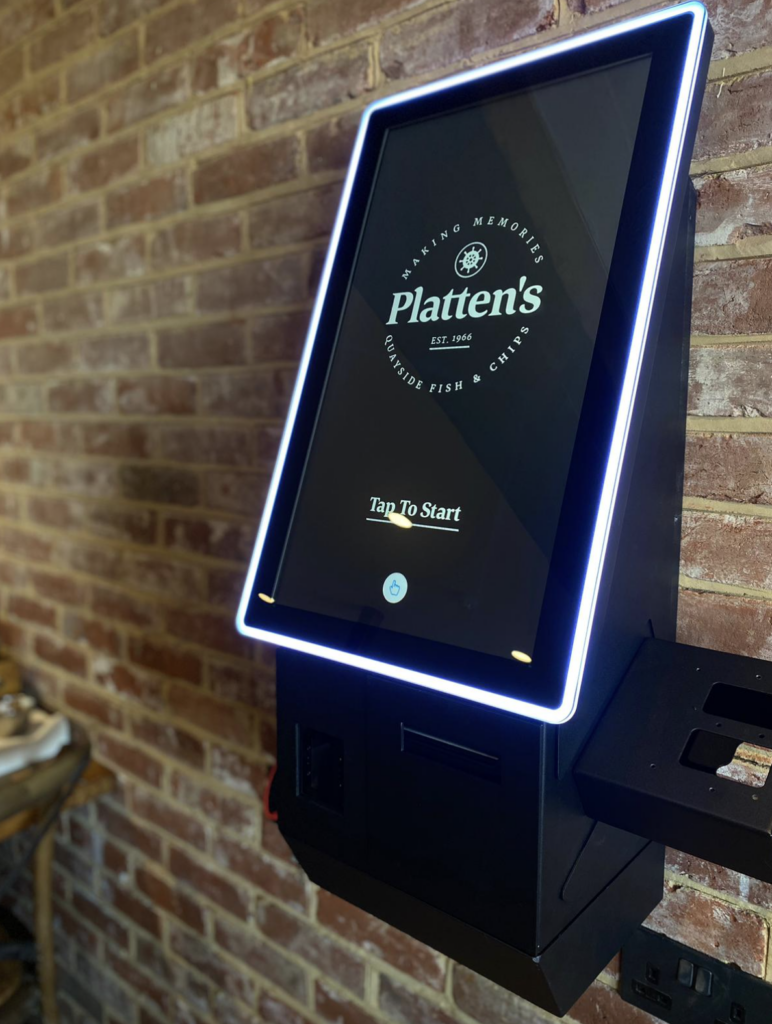From streamlining operations to enhancing the dining experience, technology is playing an increasingly vital role in how takeaways and restaurants operate. Here, we look at some of the key advances that modern operators should be considering
Self-Service: The rise of online ordering and delivery platforms has changed how consumers access food from their favourite restaurants. As a result, this has led to a growing acceptance of self-service screens – and not just from the younger generation, as Jason Bailey, sales and marketing manager at PanaEpos, explains: “All ages of consumers can see the advantages of having the latest menu in front of them when they are ordering online with suggestions on what might complement their selection provided by the shop. This is also the same for ordering in-shop via self-service screens. McDonald’s, KFC, Burger King and other large food outlets have had the technology in place for nearly 10 years now so customers have less fear of using it. Again, as with online ordering, the menu is in front of them and they have less pressure than they would whilst standing at the counter with a queue of people behind them.”
Self-service screens come with a host of advantages, such as a reduction in staffing costs, increases in efficiency and speed of service and, most importantly, increased revenue. “Shops using self-service have seen average order values increase by as much as 45% through the use of suggested upselling,” says Jason.
Digital Menu Solutions: Digital menu solutions are replacing traditional printed menus in many takeaways and restaurants, offering numerous advantages such as dynamic pricing, real-time updates and multimedia content. Interactive menu boards and tablets not only look modern but also enable restaurants to upsell items, showcase special promotions and offer targeted deals during different parts of the day.
Tableside Technology: Tableside technology is becoming increasingly prevalent in restaurants, giving diners the ability to order and/or pay for their food directly at their table. Various options are available from dedicated touchscreen menu ordering systems at each table to simple QR code menus. Using these, customers can browse menus, place orders, and pay bills directly from their tables, eliminating the need for extensive waiter interactions. This offers a seamless dining experience for the customer while freeing up staff for other duties.
Kitchen Automation and Management Systems: Automation has been a big topic in the foodservice industry for several years, but recent developments have the chance of significantly changing the way kitchens work. Paul Anderson, chair of the Foodservice Equipment Association (FEA), comments: “Circumstances like the ongoing cost of living crisis and staffing shortages have seen increasing numbers of businesses take the plunge and invest in new equipment that allows them to take advantage of the benefits of automation.”

Whilst appliances with some degree of automatic control are hardly new, the development of computerised control systems and the ability to interconnect equipment are changing things up. They can reduce the amount of work staff need to do, while improving the consistency of results and reducing product wastage. These systems are becoming increasingly common in all kinds of appliances, allowing for common kitchen processes to be automated more accurately than ever before.
Paul adds: “Automation reduces the risk of human error during the preparation of food. The consistency of the results from equipment like this means there’s less product waste, but it also offers other benefits, such as allowing you to provide more accurate calorie information on menus, which is something diners are increasingly looking for.”
Contactless Payment Systems: Contactless payment systems have gained significant traction in the hospitality industry, particularly in the wake of Covid. Whether it’s through mobile wallets, ApplePay, Android Pay or QR code scanning, contactless payment options offer customers a convenient, hygienic, and secure way to settle their bills while speeding up the process for operators.
AI: It’s hard to imagine how AI can be used in a fish and chip shop environment, but it’s a key trend coming down the line and one which Peter Moore, CEO and founder of software specialist Lolly, believes more forward-thinking providers will embrace. “AI and ML (machine learning) create greater levels of personalisation and improve the customer experience. Whether that’s facially recognising a customer as they walk through the door, or enabling them to pay by face for a slicker, more professional experience.”
Peter also believes that where the sector continues to struggle to find good staff, AI will help to bridge the gap. “Whether making existing staff more efficient, through age verification tools and integrated data insights, AI tools will help to manage business better – reducing wastage and increasing efficiencies.”

Rise in Robotics: As service-based robots become more functional and cost effective, it might not be as unusual as you think to see them in restaurant environments over the coming years. Lolly’s Peter expects them to continue to be trolley-based for the foreseeable future, taking plates back to an automated dishwasher, for example. However, he says their form and function will carry on improving and that they could well help hospitality providers meet the skills gap and labour shortages. He adds: “I believe walking and fully-interacting robots are still two to three years away, and – at that stage – we’ll see restaurants of the future being built, with robots running the front of house.”
Staff Scheduling Software: Staff scheduling and time-tracking software can be a game-changer, creating rotas as far forward as you like by accessing information on your business needs as well as on your employee records and requirements. Dave Lee, CEO of online staff rota software company Planday, comments: “Imagine a system that automatically highlights any potential compliance issues, gaps or clashes, and generating a one-click change system to deal with all amends. A faster way to get way ahead of your planning and have happier teams.”
As well as offering cost benefits that include paying employees for the exact time they work and accurately forecasting demand, a digitalised workplace is what the next generation of workers expect, and will help drive up retention, says Dave. “They’re digital-first workers and insist on digital-first solutions,” he says. “Software such as Planday comes with features that appeal highly to those younger workers: from a mobile app dedicated to their job, insight such as to who they’re working with, a centralised comms platform and the ability to swap shifts seamlessly, it offers the work/life balance that younger people require and an empowerment that they enjoy.”
Energy Efficient Technology: Investing in energy efficient technology is increasingly important, both for environmental reasons and to reduce running costs. Each category of equipment will have different energy efficient features to consider as the FEA’s Paul Anderson explains: “With warewashing, for example, look for products with low consumption of water, chemicals, and energy, with good insulating properties and heat recovery options. For refrigeration, look for the best net capacity and energy efficiency ratings, as detailed on the EcoLabel. For all equipment, check to see if the product is listed on the UK’s Energy Technology List (ETL) which now includes refrigeration, combi ovens, ovens and commercial dishwashers, with more categories due to be added in the future.”
Another form of technology Paul recommends considering is connectivity, which allows equipment to be monitored remotely. “It can help make equipment more reliable, but also more energy efficient,” he says. “For example, it can highlight good and bad practices, such as telling managers if an appliance is regularly powered up before it needs to be.”
FEA 0207 793 3030 www.fea.org.uk
Lolly 0800 038 5389 www.itslolly.com
PanaEpos 01692 404949 www.panaepos.com
PlanDay www.planday.com
EMBRACING TECHNOLOGY

Achieving a successful tech rollout requires more than just selecting the right tools; it demands collaboration and buy-in from all corners of the business. Digital ordering system and hospitality payment solution QikServe has the following tips to ensure it is embraced by all:
• Ensure teams are well-versed in using the new tools and understand how to leverage them for their respective roles.
• Train selected employees to become digital advocates within their respective teams. These advocates can champion the adoption of technology and help their colleagues embrace the change.
• Start with small-scale pilot programmes, allow the benefits of the technology to be seen in a controlled environment before a full rollout, and encourage teams to provide feedback during these pilots.
QikServe www.qikserve.com hello@qikserve.com








